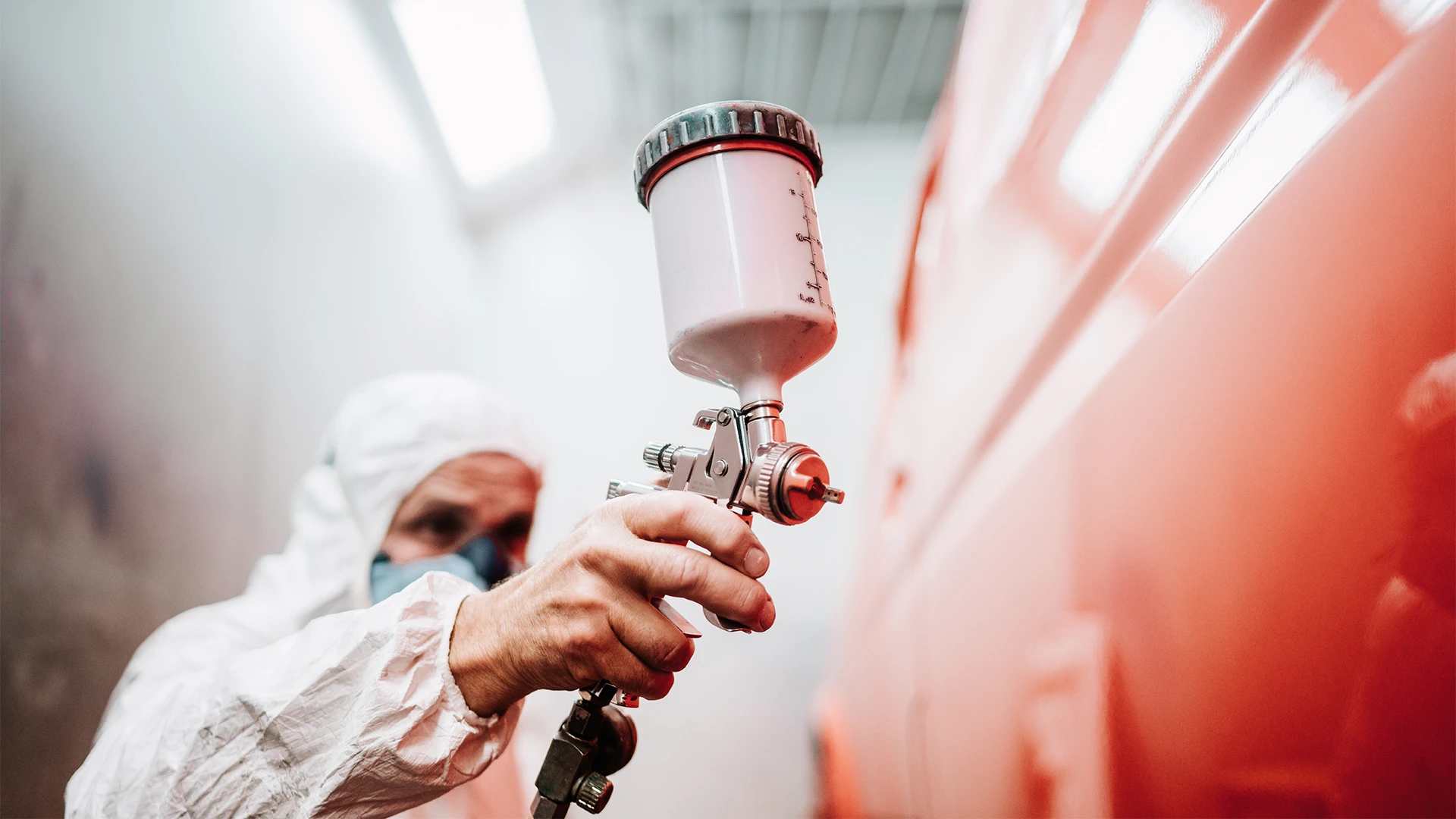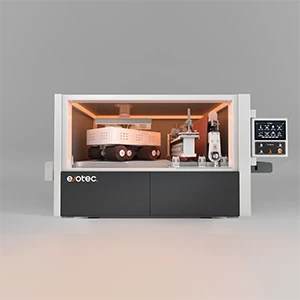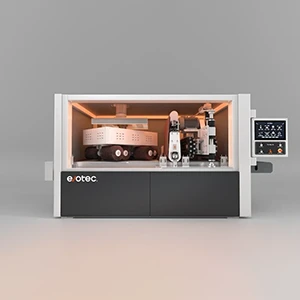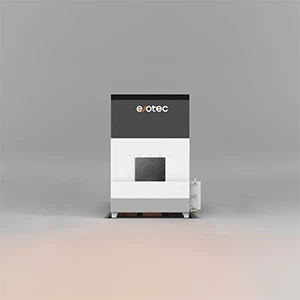Edge Rounding for Spray Painting: Enhancing Coating Adhesion & Finish Quality
Successful spray-painting isn’t just about the paint—it’s about what lies underneath. Even the highest-performance coating materials will struggle to deliver lasting adhesion and a flawless finish if the surface preparation is inadequate. Among surface-prep techniques, rounding sharp edges is often overlooked—yet it can make a dramatic difference in coating performance. With advanced edge-rounding technology specifically engineered for spray-paint applications, manufacturers can unlock superior coating adhesion and finish quality.

Key Takeaways
- Sharp edges undermine spray-paint performance because coatings tend to thin out at corners, reducing adhesion and durability.
- Edge rounding improves coating film build and adhesion by creating a smoother transition geometry.
- Consistent rounding is most effective when integrated into the full pre-treatment workflow.
- Precision equipment that controls radius and part variability delivers measurable benefits in finish quality, cost savings and throughput.
- Optimal rounding is application-specific—focus on performance goals (adhesion, thickness, finish) rather than arbitrary radius spec.
Why Sharp Edges Are a Weak Link
Sharp corners and edges represent a point of vulnerability in spray-painting operations. When paint is applied over a sharp edge, the coating film tends to thin out because the surface tension and geometry cause the liquid to flow away or form thinner layers. The result: sub-optimal film build, reduced corrosion resistance, and increased likelihood of peeling, chipping or other coating failures—especially in demanding sectors such as automotive, appliance manufacturing and industrial equipment.
How Edge Rounding Enhances Coating Performance
Edge rounding addresses this weakness by softening the transition between surfaces and creating a more gradual geometry. That, in turn, improves the uniformity of paint film build, promotes better flow and surface wetting, and helps the coating form a stronger bond. Research supports this: one study found that untreated sharp edges produced up to a 50% reduction in film thickness compared to rounded edges. Another source emphasizes that while increasing radius has diminishing returns, rounding consistently helps achieve reliable coating coverage.
In practice this means better adhesion, fewer pinholes or weak spots, and improved durability—and for decision-makers in spray painting operations, rounding edges is a smart strategic move.
Tailored Systems for Spray-Painting Environments
Our edge-rounding machines are purpose-built for this challenge, not simply generic deburring tools. They offer features such as:
- Controlled radius formation: Precision settings to consistently apply the same radius to every part—minimising operator variability.
- Uniform surface preparation: Capability to handle parts of varying sizes and materials while delivering even results across all surfaces.
- Seamless integration with pre-paint processes: Designed to be embedded into automated production lines, synchronising with pre-treatment and paint-booth workflows to maximise throughput.
Together, these attributes support a robust pre-paint surface-prep strategy where edge geometry becomes a defined parameter rather than a variable.
Industry Applications & Benefits
In automotive manufacturing, for example, precise edge rounding ensures uniform primer and top-coat coverage on chassis parts and exterior panels. In appliance and consumer-goods production, consistent radii enable even paint thickness on visible surfaces, improving both aesthetics and performance. In architectural metalwork, they enhance both durability and visual appeal. And in electrical enclosures, rounding critical edges helps avoid corrosion at cut-outs and junctions.
From a lean-manufacturing perspective, rounding edges also reduces manual rework and inspection effort, leads to more predictable drying times and fewer coating anomalies, lowers paint waste, and supports tighter cycle times—all contributing to lower total coating cost.
Key Considerations & Best Practices
To maximise the benefit:
- Define the necessary radius for your application. As one expert note puts it: “as little as possible and as much as necessary.” For many spray-painted steel parts, an edge radius of ~0.5 mm (0.02”) has been shown to yield reliable results.
- Maintain consistent edge geometry across all parts in a run—variability leads to weak spots.
- Align edge rounding with your entire pre-treatment chain: cleaning, blasting, degreasing, rounding, and then painting. The edge rounding alone isn’t a cure if upstream surface prep is poor.
- Validate your system with adhesion and thickness tests (e.g., cross-cut, peel tests) to ensure that the underlying improvement is delivering measurable benefit.
- Monitor throughput and cost impact: rounding increases processing time and abrasive/consumable use as the radius increases—so optimise for minimal required radius, not maximal.
FAQs
Q: How large does the edge radius need to be for a spray-painted part?
A: It depends on your specific substrate, coating system and environment. Some industry data suggest that a radius of around 0.5 mm (0.02”) is sufficient for effective coating coverage in many cases. Higher radii may not proportionally improve performance and can increase cost (material removal, processing time). Trials are recommended.
Q: Does rounding always guarantee better adhesion?
A: Rounding is a strong contributor, but it must be combined with good surface prep (cleaning, blasting, degreasing) and proper coating application. A study found that while edge radius matters, the overall rounding process and coating system were more significant indicators of coverage than purely larger radii.
Q: Can rounding replace other pre-treatment steps?
A: No. Rounding complements but does not replace crucial steps like cleaning, degreasing, blasting or phosphating. If upstream prep is insufficient, rounding alone cannot compensate.
Q: Will rounding slow down my production line?
A: It can if not integrated carefully. However, modern systems designed for inline automation can synchronise rounding with upstream and downstream operations, minimising impact on cycle time and even reducing rework and inspection—which offsets the added step.
Q: Which industries benefit most from edge rounding for coating?
A: Industries with high aesthetic or functional requirements for coated parts—automotive, consumer appliances, architectural metals, industrial equipment, electrical enclosures—typically see the greatest benefit.
If you’re ready to elevate your spray-painting process and achieve stronger adhesion, smoother finishes and lower defect rates, let’s talk. Our precision edge-rounding systems are engineered to integrate seamlessly into your manufacturing flow and deliver measurable results. Contact our team today for a consultation or trial run and let’s collaborate on optimising your coating-preparation workflow.








